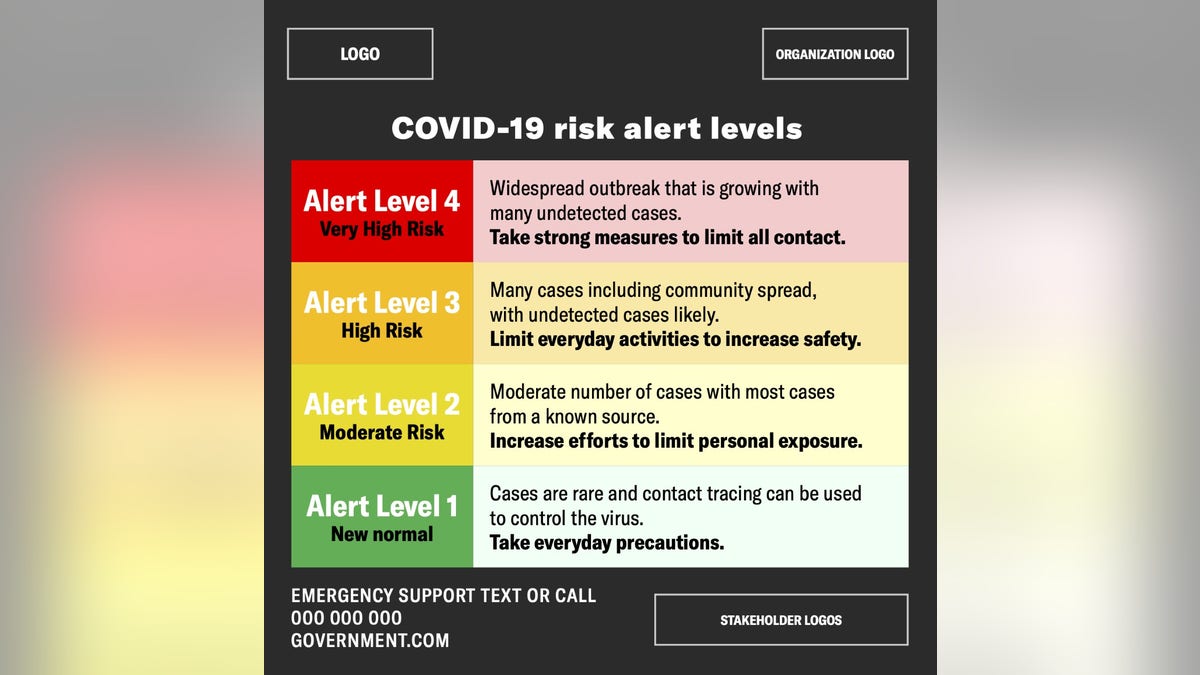Get all the latest news on coronavirus and more delivered daily to your inbox. Sign up here.
If you’ve lived on a coast during hurricane season, driven in a big city with heavy smog, or hiked in woods prone to wildfires, you may have seen a simple color-coded alert. At a glance, it told you if a hidden danger was present that affected you and others — an approaching storm, harmful air pollution, or dry brush ready to burn. Simple information with practical advice to stay safe and not endanger others.
Authorities didn’t close the beach, block the road or close the trail. Instead, they counted on you to read the sign and let you decide on the appropriate precautions.
In the past few months, COVID-19 has become a new danger. My initiative, Resolve to Save Lives, works in the United States and around the world. We looked for the very best policies to help us get our economy started again without rekindling the epidemic.
Americans want two things: to get back to business and to not endanger the health of their loved ones and themselves. The better we control the virus, the sooner we can restart our economy, because to protect livelihoods, we must protect lives. And the quicker we get back to work, the healthier we will be.
Today we released our recommendations – a four-level, color-coded alert system. Think of it as a weather report on the virus that does three things.

This alert system should be implemented by state governments — with wide consultation within society — and then applied at both state and local levels.
First, it empowers you to protect yourself and your family. There are times when older adults and people with serious health conditions should be extra careful to avoid infection. And businesses, schools, health care facilities, nursing homes, and others need practical information on what they can do at different levels of risk.
More from Opinion
We need to know about a looming or receding threat such as a hurricane. Increased risk of the new coronavirus should be communicated similarly so people know what they can do to protect themselves and their loved ones. Knowing that this is a week to wear your mask when you’re indoors and near other people should be as easy and straightforward as bringing an umbrella to work on a rainy day.
Second, it holds government – and all of us – accountable. We found the seven best measures to track to know how widely the virus is spreading, how ready our hospitals and health workers are, and how safe our public health system can keep us. And we made sure to account for both health and economics, which are in sync, not in conflict here.
Third, this system can accelerate progress reducing risk by focusing on crucially important things we can do to restore economic activity and fight the virus without rekindling the pandemic.
There are basic principles to follow (our recently released guidelines are here, an explanation of them here, and details of what a system would look like in your community here). They communicate a simple, practical message:
It’s not about open vs. closed or health vs. economics. It’s about stages of opening and about accelerating economic recovery while keeping people as safe as we can.
When there are lots of cases, health care or basic control measures are getting overwhelmed, more precautions — washing your hands, teleworking, cleaning dirty surfaces well – will protect you and others.
When cases decline, it’s safer to resume some normal activities, while still physical distancing wherever possible and not having large gatherings.
When the virus is better controlled, we move toward a new normal, continuing safety measures such as regular handwashing, protecting the most vulnerable and not going out if we’re sick.
CLICK HERE TO SIGN UP FOR OUR OPINION NEWSLETTER
It’s not about open vs. closed or health vs. economics. It’s about stages of opening and about accelerating economic recovery while keeping people as safe as we can. Each community can find a balance, increasing or decreasing the alert level based on health, economic and social considerations.
We all want to get back to our normal lives. By tailoring our actions to the level of viral threat, we can open up society as quickly as possible and people can get back to other essential work while also protecting the vulnerable and saving lives.
We’ll continue to work with communities around the country and the world to discover even better approaches to tracking, responding to, and stopping the virus.
CLICK HERE TO GET THE FOX NEWS APP
There’s a lot riding on our success. A careless action could ignite a wildfire that jeopardizes a whole community, and ignoring the alert levels of COVID-19 could start a deadly viral flare-up that sets back economic recovery.
By adopting an alert-level approach, we can empower people, hold governments accountable and accelerate progress. We can recover our economy without risking our lives.

